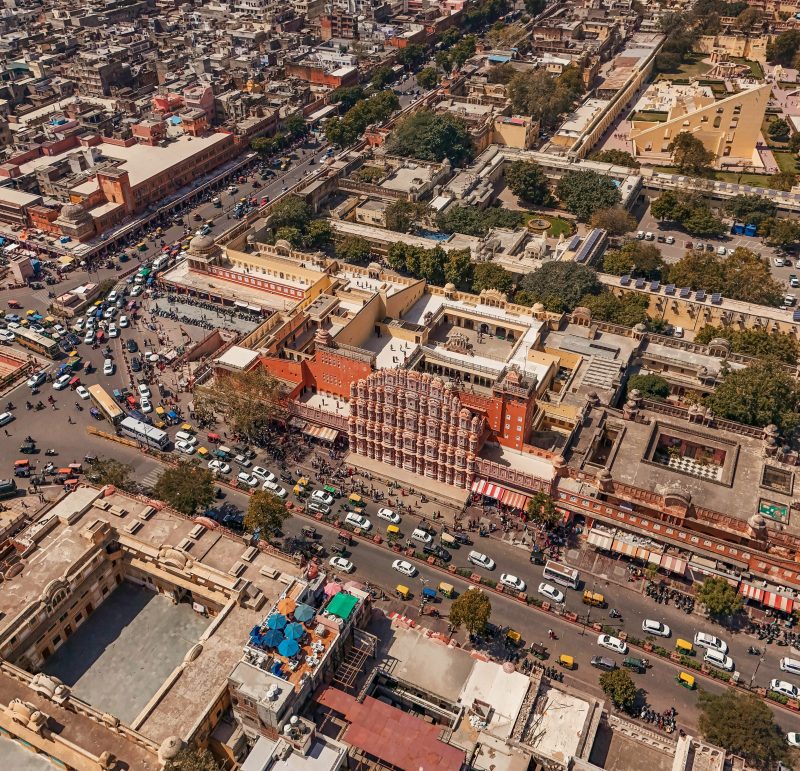
While chairing the 10th Governing Council Meeting of NITI Aayog on 24th May 2025, PM Narendra Modi observed that: ‘India is urbanising rapidly.’ He asked the states to make cities the engine of sustainability and growth, and urged them to focus on Tier 2 and Tier 3 cities. He noted that a Rs 1 lakh crore Urban Challenge Fund (UCF) is being created for seed money.
In the budget 2025-26, an annual allocation of Rs. 10,000 crores is made for UCF to implement project proposals for `Cities as Growth Hubs’, `Creative Re-development of Cities’ and `Water and Sanitation.’ The Centre will finance up to 25% of the cost of bankable projects provided at least 50% of the cost is funded from bonds, bank loans, and PPPs.
In 2002-03, the government had proposed to set up a similar City Challenge Fund (CCF) to provide incentivised partial public financing for urban infrastructure development. However, no financial allocation was made specifically for setting up CCF. A total of Rs. 24.68 crores were set aside for a wide range of Other Urban Development Schemes, including CCF. This allocation was increased to Rs. 50 lakhs for the financial years 2003-04 and 2004-05. However, no city had accessed CCF, perhaps because the size of the fund was too small and the stipulation of designing and implementing associated city-level reforms was too demanding.
The rationale behind setting up UCF, with a much larger allocation of funds, is the realisation that the limited public finance must be leveraged to raise funds from the market for improving urban infrastructure and services. This is because municipal revenues have not increased significantly in most cities, but have remained stagnant on an average at about 1 per cent share of GDP between 2007-08 and 2017-18 as reported in the 15th Finance Commission Report.
At Rs. 10,000 crores per year, the size of the UCF kitty is definitely huge in comparison. But the question is: Are Indian cities, particularly in Tier 2 and 3 categories, better equipped to access partial funding from UCF while raising the remaining resources from the market two decades later?
The current scenario is more positive for possible successful implementation of UCF. First, though only 16 cities have opted to raise funds through municipal bonds, a significantly larger number of cities have some experience of PPP arrangements for infrastructure development. Second, all projects eligible under the three categories for UCF funding have some revenue generation potential. However, many Tier 2 and Tier 3 cities may not have the capacity to design large infrastructure projects with complex funding arrangement including bonds, bank loans, and PPPs to qualify for UCF support. Hence, the central government should make the following policy changes to enable Tier 2 and Tier 3 cities to access UCF funds in the next five years:
First, increase the government incentive from the proposed 50 per cent to 60 per cent, with 30 per cent being central grant and matching 30 per cent coming from the state governments, and to reduce market borrowings and PPPs to at least 40 percent. This will also be in line with the current government practice as is followed by the Ministry of Finance for implementing the Viability Gap Funding scheme for supporting infrastructure projects undertaken through PPPs with the similar objective of making them commercially viable.
Second, synchronise UCF funding with other ongoing government schemes to optimise their outcomes, in particular: Commerce Ministry supported formulation of ‘City Level Economic Vision for 100 Tier 2 and 3 Cities’ by June 2026, as a part of nationwide reforms to create manufacturing hubs in 1,039 cities; and Niti Aayog’s Growth Hubs Initiative currently covering 4 cities that is to be scaled up to 16 cities. This would help states and cities to identify a few low hanging bankable urban infrastructure projects suitable to get funding from UCF with relative ease and speed.
Third, as the central government is interested in broad-basing its support to tier 2 and Tier 3 cities, and these cities may require technical support for preparation of bankable projects, some allocation should be made for financing it while formulating the operational design of UCF.
To conclude, supporting Tier 2 and Tier 3 cities will help in fulfilling the country’s aspiration of becoming Viksit Bharat by 2047 as well as in meeting the objective of realizing a more spatially dispersed and equable urban growth pattern in India.
